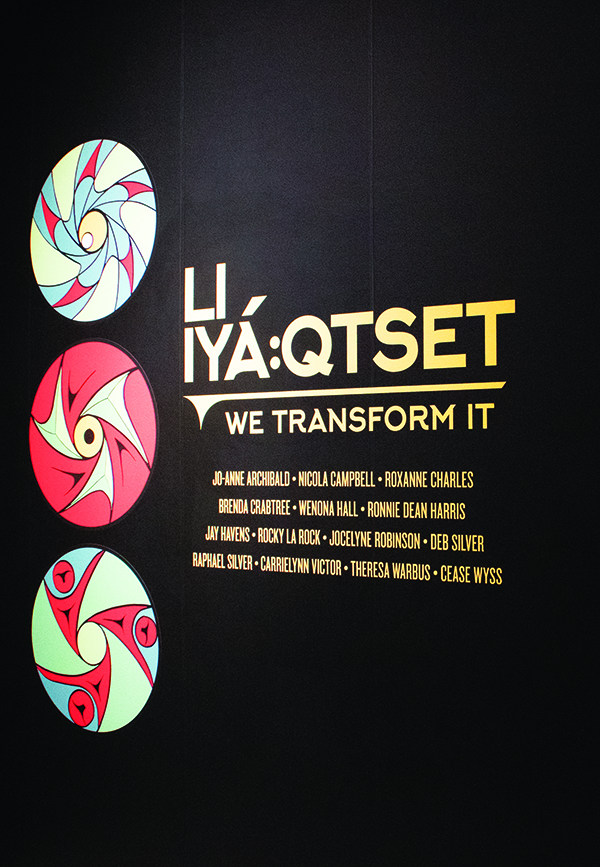Last Thursday I spent a lovely evening at The Reach Gallery attending the official launch of their fall/winter installations. The gallery is featuring four exhibits: Li iyá:qtset — We Transform It, 2019 Fraser Valley Biennale, Susan Point: Spindle Whorl, and Art on Demand 5.3. Each exhibit features a compilation of important and beautiful pieces reflecting a wide variety of voices from across the Lower Mainland.
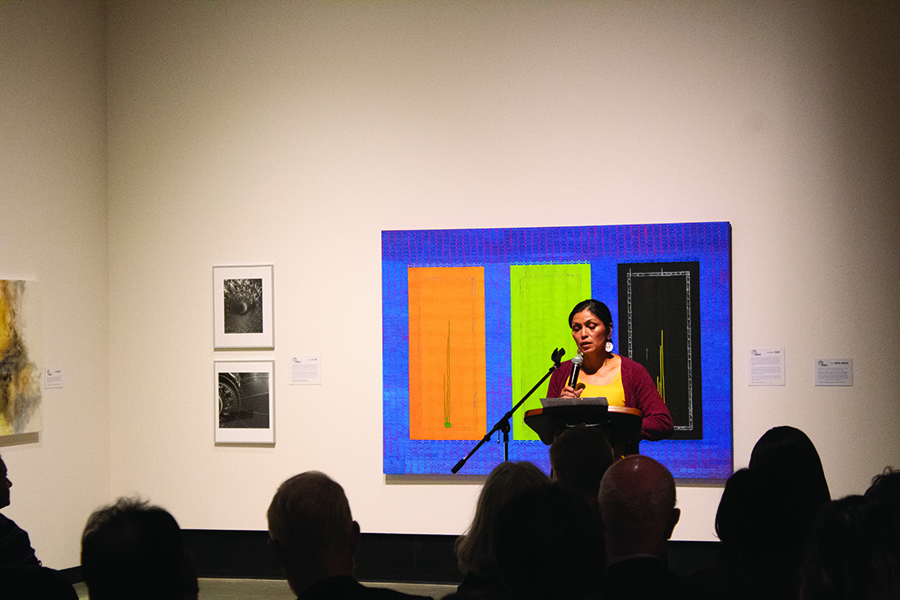
Li iyá:qtset — We Transform It showcased over a dozen Indigenous artists, thinkers, writers, and scholars from Coast Salish territory. The contributors were inspired by The Reach’s Reel Change film series presented between October 2018 and June 2019. The pieces were artistic reactions to different Indigenous films viewed during the series. The exhibition was curated by Adrienne Fast, The Reach’s curator of art and visual culture.
The 2019 Fraser Valley Biennale included works from a dynamic group of artists from the Fraser Valley produced over the past two years. Included in this exhibit was Sidi Chen, a 2018 UFV visual arts (VA) graduate; Paula Funk, a college of arts advisor at UFV; and Chris Friesen, a UFV VA associate professor.
Art on Demand 5.3 was curated by UFV alumni, Cassie de Jong, and featured two emerging artists. Each year The Reach features four Art on Demand exhibitions, intended to be a mentoring program for young artists between the ages of 18-35. This year, a UFV alumni and a current UFV student were featured: Lynden Chan and Isabella Dagnino. This particular exhibit focused on the artist’s responses to commuter culture, specifically the use of Highway One in the Lower Mainland and its relationship to the environment and community.
One of the largest exhibits was Susan Point: Spindle Whorl, showcasing a lifetime of creation from as early as 1981 up until today. Point’s work is internationally recognized and even featured in Vancouver International Airport. Her work is created with a traditional Coast Salish tool, the spindle whorl, used by women to prepare wool. Not only does she push boundaries in the tools she chooses to use, but also by paving the way for other women as, traditionally, making art wasn’t practiced by Indigenous women. As well as using the spindle whorl, she carves some of her pieces; carving, also, being a practice traditionally dominated by Indigenous men.
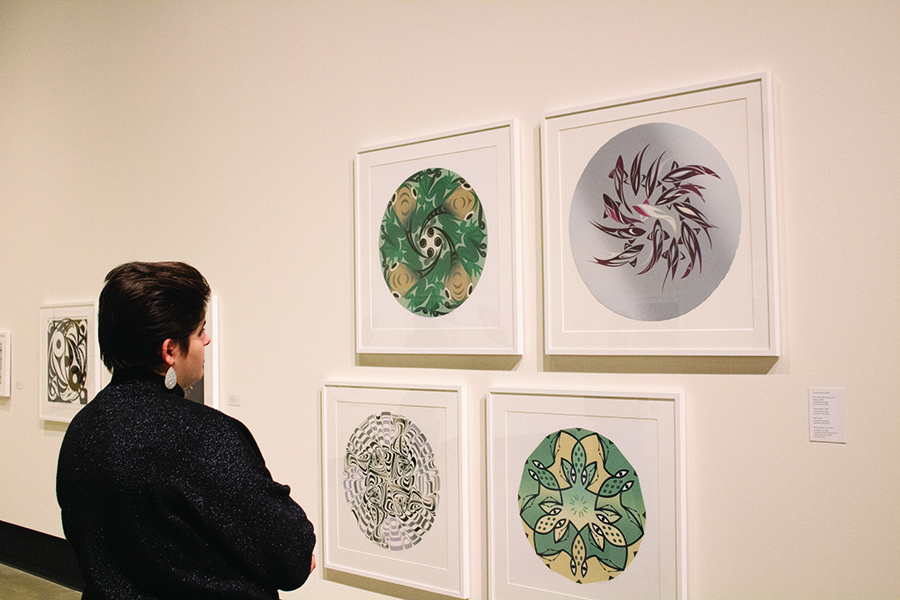
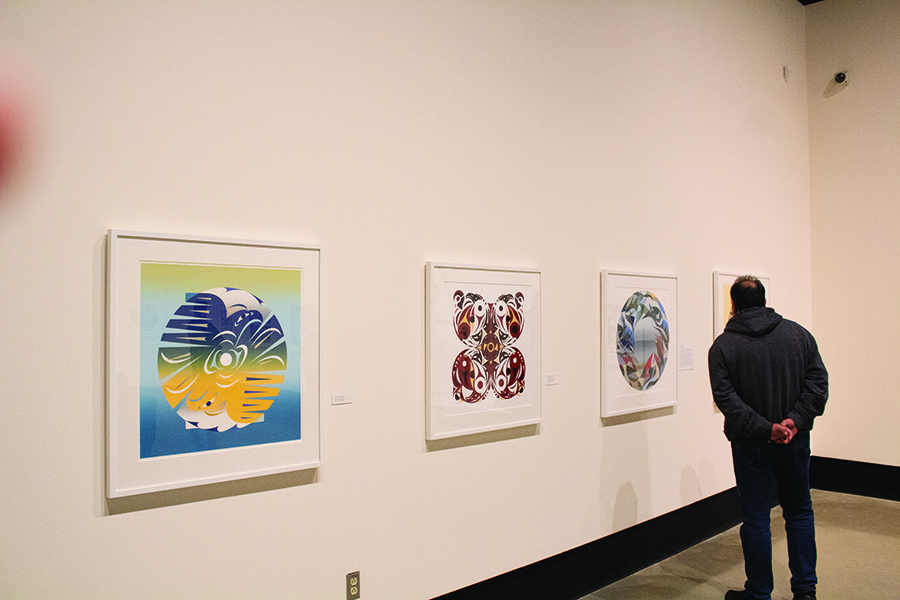
The launch on Thursday, Oct. 3 was well attended. Entry was free and refreshments were provided. As a snack enthusiast, I was impressed with the generous spread of meats, cheeses, bread and dip, and the abundance and variety of smoked salmon.
To kick off the evening, a traditional welcoming ceremony was led by Chris Silver of Sumas First Nation, Rocky LaRock, and Carrielynn Victor. Silver spoke about the meaningfulness of featuring Indigenous artists in the exhibit.
“The one thing that lies inside all of us is some chance of immortality. That’s what the arts have done; when you go throughout our Coast Salish territory, you look at the totem poles they have in Haida Gwaii, and welcome figures that they have in museums. Those tell the stories of our people… That’s something that’s very deeply moving to us, that people come here from far and wide just to look at our artwork and appreciate our culture. That’s very meaningful to us.”
Laura Schneider, executive director of The Reach, spoke about the work that went into bringing the exhibits to fruition. A few of the artists took the stage to speak about their work and process and purpose of creating. For many of the First Nations artists, their work came from a place of exploring, healing, and reclaiming culture.
Jay Havens from the Six Nations of the Grand River, Mohawk Bear Clan spoke about their installation: “My installation is really meant to stir some questions about what we’re doing in this post-residential school era. What we’re doing with the sites of the residential schools and how we’re starting to heal those spaces and heal from those spaces.”
The Li iyá:qtset, Spindle Whorl, and Biennale exhibits will be up until Jan. 5, 2020 and the Art on Demand 5.3 will remain until Nov. 17, 2019. Entrance to The Reach is free, family friendly, and well worth a visit. The gallery also hosts a number of events and programs that members of the community can register for through The Reach website.
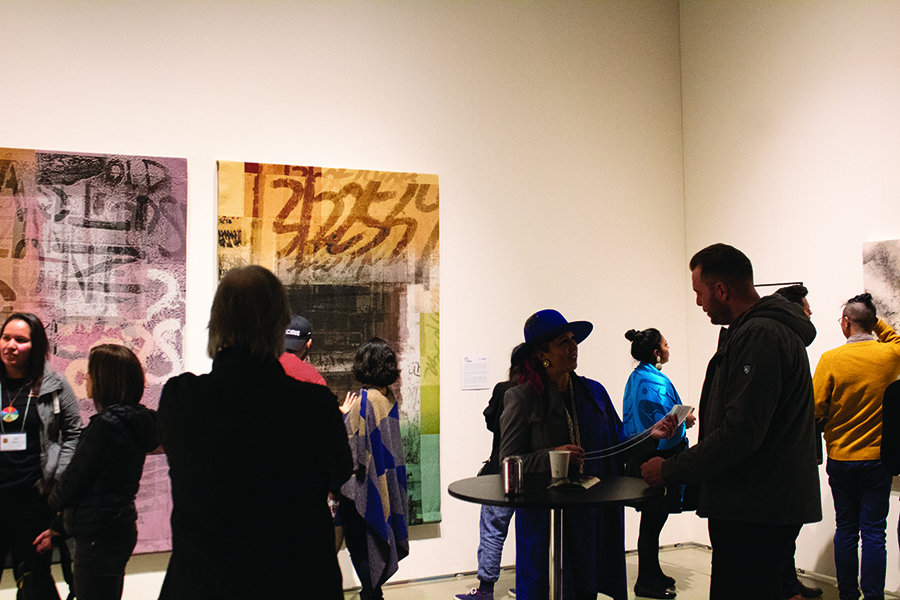
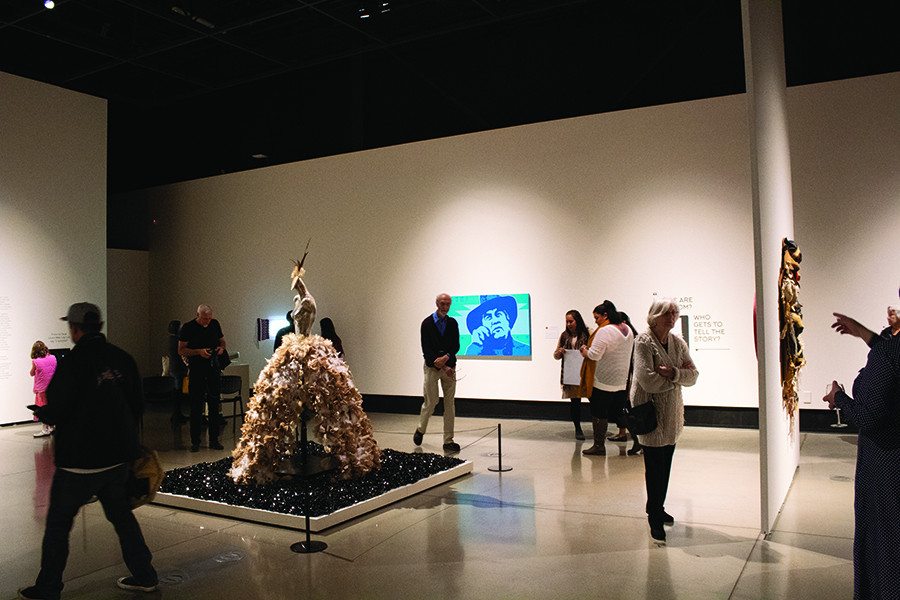
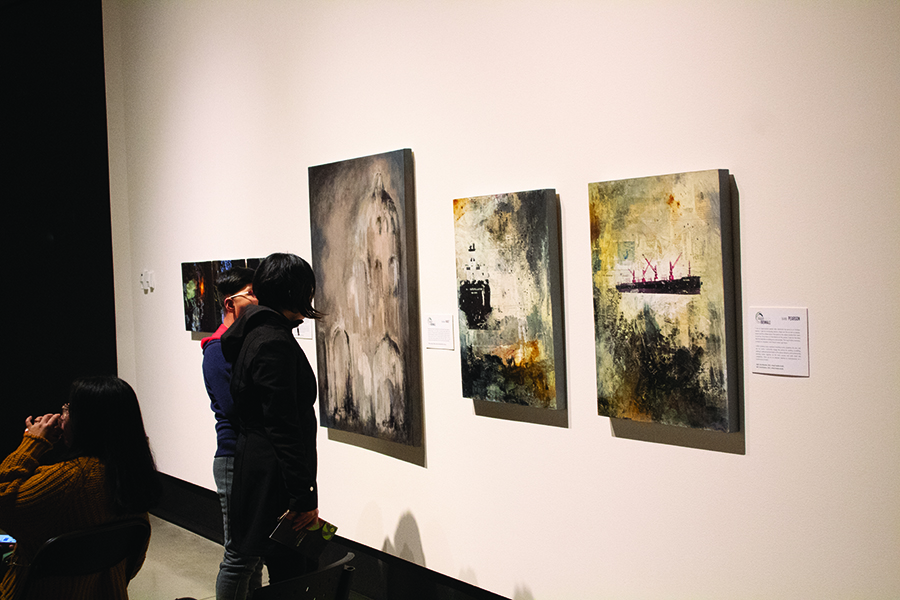
Image: David Myles/The Cascade
Darien Johnsen is a UFV alumni who obtained her Bachelor of Arts degree with double extended minors in Global Development Studies and Sociology in 2020. She started writing for The Cascade in 2018, taking on the role of features editor shortly after.
She’s passionate about justice, sustainable development, and education.

